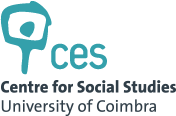Theses defended
A construção de um império: território, conexões e arquitectura na Companhia de Diamantes de Angola
January 5, 2024
Heritages of Portuguese Influence
Ana Vaz Milheiro
e
Miguel Bandeira Jerónimo
The object of this research is the space built by the Diamond Company of Angola (Diamang) in Lunda, Angola. Diamang was a diamond exploration company, set up in 1917 and shut down in 1988, which operated (above all) within the political framework of the Portuguese colonial empire. Throughout a large concession area of 45,483km2, the company planned and implemented (infra) structures on diverse scales, programmes, and contexts, ensuring the permanence of plenty of labour force, both essential to its mining activities and its participation in the global economy.
Despite Diamang's significant role in multiple political and material construction(s) across time and space, its landscape is still a grey area in the studies on the production of architecture and expressions of urbanity in Africa. On the one hand, because very little is known about its buildings and spatial activities; on the other, because the company's spaces consisted of everyday non-exceptional structures that do not fit into the canonical settings - on scale, language, location or authorship - that have stood out in most colonial architecture research. In addition to these points, Diamang also presents striking connections with other colonial enterprises in neighbouring geographies, particularly in the former Belgian Congo, which allows inquiring about the extent of transnational and transimperial networks in the construction of European colonialism in Africa.
The research aims to grasp the numerous and diverse dynamics of imagination, naming, planning, building and contestation within Diamang's spaces. Each part of the thesis follows a particular theme and objectives, by questioning the construction(s) of the territory, the imaginaries of urbanity and the spatialisations of power. Plans, projects and translations are discussed not only for a comprehensive view of Diamang's landscape and building forms but also for a broader understanding of the colonial space in Africa.
Key-words: Angola; Diamang; Heritage; Territory
Public Defence date
Doctoral Programme
Supervision
Abstract
Despite Diamang's significant role in multiple political and material construction(s) across time and space, its landscape is still a grey area in the studies on the production of architecture and expressions of urbanity in Africa. On the one hand, because very little is known about its buildings and spatial activities; on the other, because the company's spaces consisted of everyday non-exceptional structures that do not fit into the canonical settings - on scale, language, location or authorship - that have stood out in most colonial architecture research. In addition to these points, Diamang also presents striking connections with other colonial enterprises in neighbouring geographies, particularly in the former Belgian Congo, which allows inquiring about the extent of transnational and transimperial networks in the construction of European colonialism in Africa.
The research aims to grasp the numerous and diverse dynamics of imagination, naming, planning, building and contestation within Diamang's spaces. Each part of the thesis follows a particular theme and objectives, by questioning the construction(s) of the territory, the imaginaries of urbanity and the spatialisations of power. Plans, projects and translations are discussed not only for a comprehensive view of Diamang's landscape and building forms but also for a broader understanding of the colonial space in Africa.
Key-words: Angola; Diamang; Heritage; Territory

